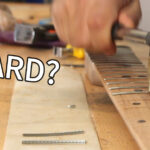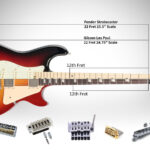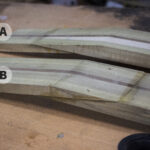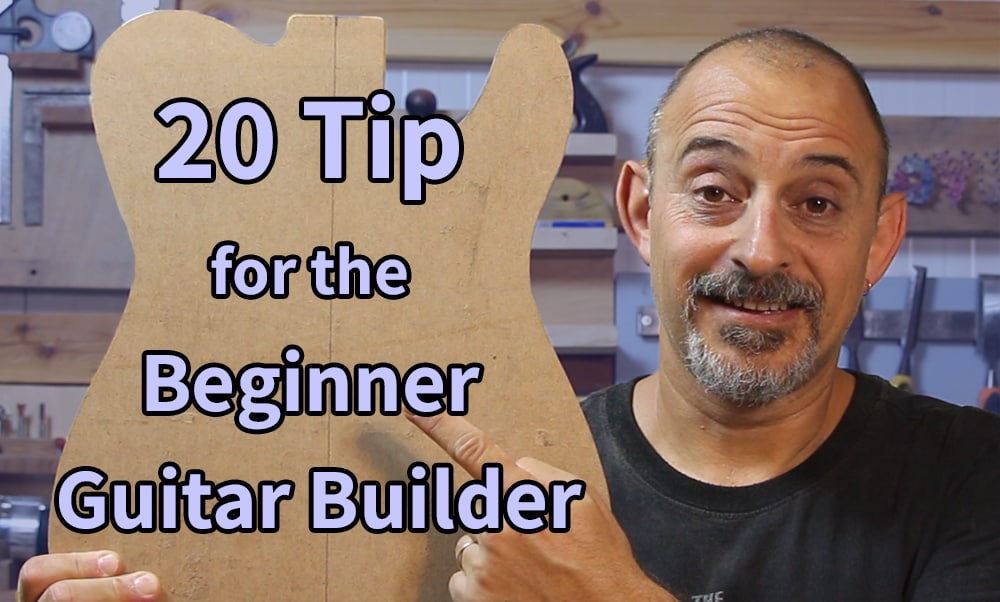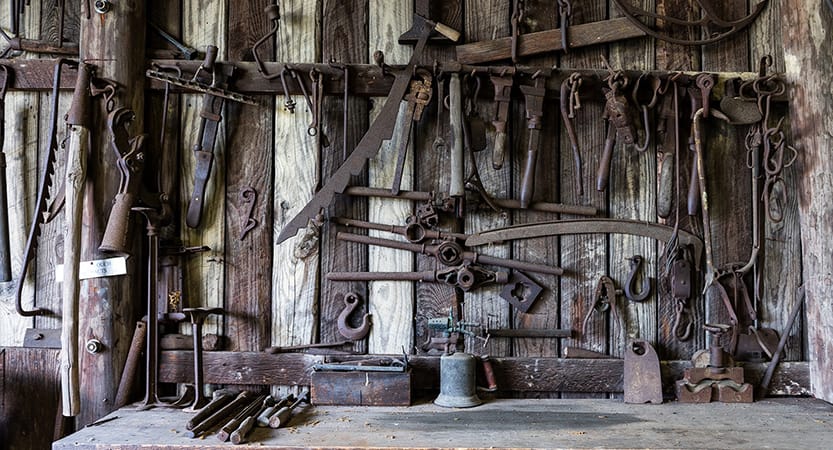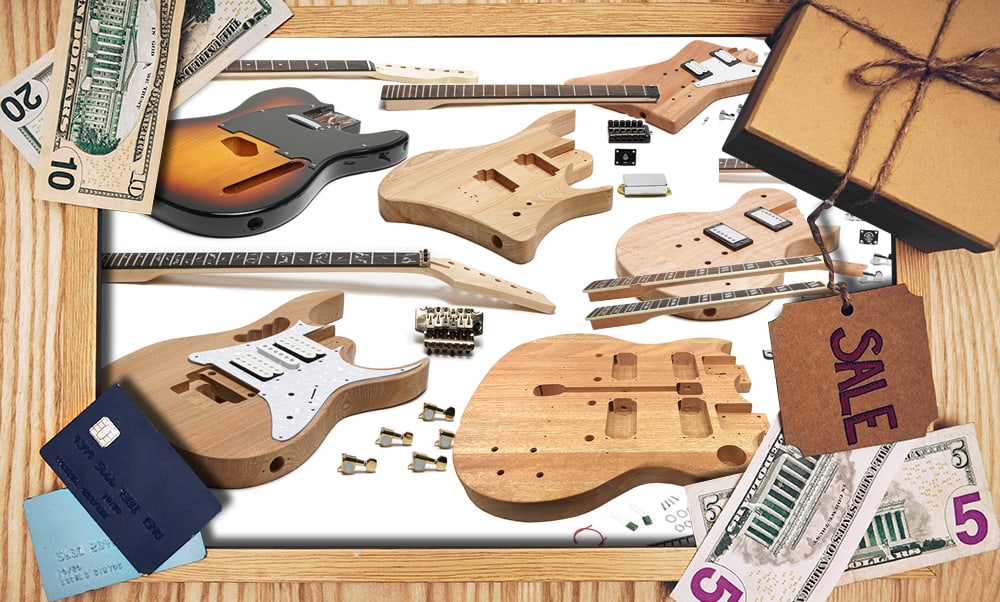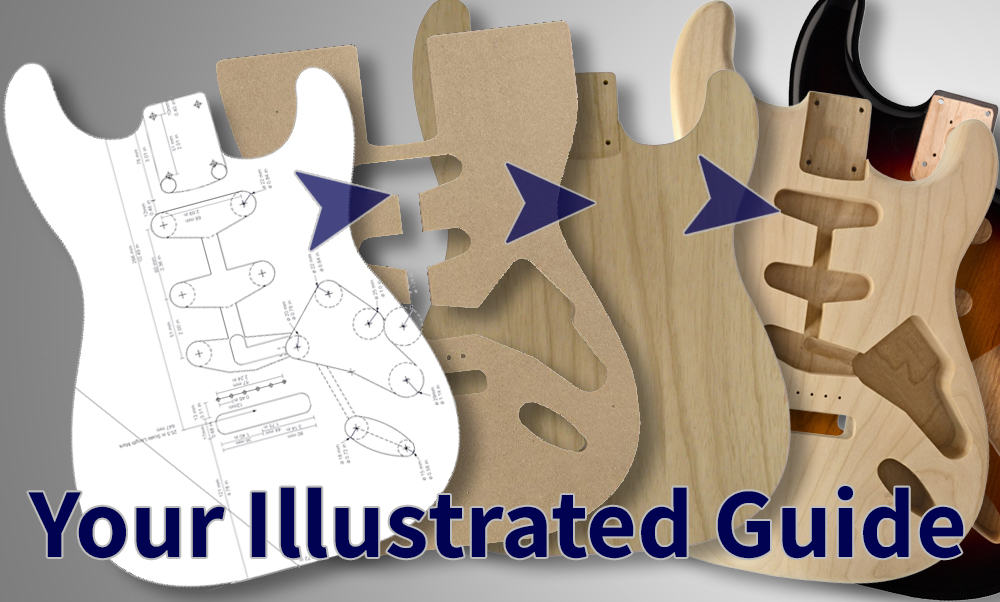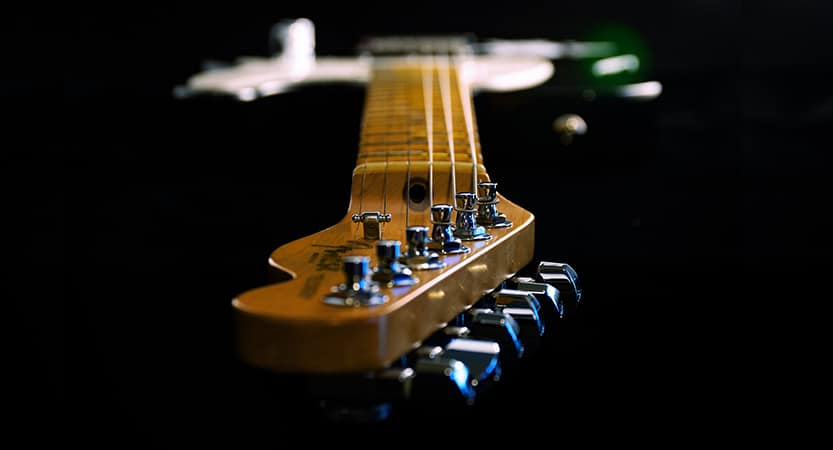When approaching the process of building an electric guitar as a beginner, there are a lot of steps, instructions and methods you need to learn and execute. On top of that or as part of that there are a lot of little considerations which can make big differences to both the outcome and the process of the build.
As a relative novice myself, I still have a sense of the type of information that may seem trivial to professional and veteran guitar builders. Building a lot on the experience of others and having made my share of mistakes as well, I have assembled the top tips which may help you avoid some mistakes, make the right choices and maybe make this journey a bit smoother. Some of these may overlap or seem to repeat themselves, but there is a point to each one and I’d rather repeat myself than miss one.
Practical Suggestions
#1 – Plan ahead
Don’t ‘wing it’. A lot of work and often money goes into building a guitar. A lot of things can go wrong, especially if you are a novice. Some mistakes can be fixed, corrected or replaced, but all too often may be too costly in time or budget and will cause great frustration. There is a learning curve and planning will not avoid all mistakes but will at least eliminate a large part of them. It is better to reach a certain level of competence before counting on ‘happy’ mistakes. See “All You Need to Know to Build Your First Electric Guitar”
#2 – Understand Scale Length
Regardless of the look of the guitar you are building scale length will have a big effect on the construction and assembly. Even in some kits you may find yourself wondering where exactly the bridge should be located. Scale length is defined as the playable part of the string and will span from the bridge to the nut. It is also calculated as twice the distance from the nut (fret zero) to the twelfth fret. The total scale length will effect the spacing of the frets, (if you are fretting yourself), the position of the neck (if buying the neck and building the body) and the position of the bridge. The positioning of the pickups will also be derived from where the bridge and the neck are located. Typical Gibson Guitars have a 24.75” (628.6mm) and most Fenders are 25.5” (647.7mm) so if you are going for one of these or if you are buying a pre-freted neck you just have to make sure your bridge is in the right place. Most bridges have some adjustment for fine tuning the intonation but can only make up for minor errors so you better be very close with the build itself.

#3 – Understand how guitar necks works
The neck is a pivotal part of the guitar, and will determine the playability and feel of the guitar more than any other part. Get familiar with terms such as ‘Neck Angle’, ‘Neck relief’, ‘Neck Profile’ and ‘Fretboard Radius’, learn how they make a difference and make more educated decisions in the design.
#4 – Know your hardware
Different bridges will require different preparations of the body, specific nuts will benefit from a slightly longer neck and machine-heads can come as one sided or double, locking or ‘free’ and with different hole sizes. It is important to know the hardware you are planing to use, understand it’s limitations, what it demands for setup and not find out you need to carve the body after it has been finished and polished.
#5 – It’s Electric
Get familiar with the pickups, nobs and switches. Understand (at least) the basic principles of how they work and effect the sound. If you come from guitar playing or from woodworking this aspect may be very foreign to you, but is actually at the very core of the guitars’ sound.a
#6 – Know your tools and techniques
Different aspects of the guitar building process require either specialty tools or techniques you may not find elsewhere. Understanding which tools you need,( and which you don’t) and learning how to use them is going to be key in any type of guitar. “35 Must-Have Tools for Building an Electric Guitar” would be a great place to start.
#7 – Consider working with templates
Templates are a great way to achieve the right shapes and sizes for any guitar. Templates will also give you smooth straight edges and consistency in the longer run. Chances are, if you make your own templates, you will also learn about the process, the tools and you will be able to avoid mistakes you may have made directly on the guitar. Templates can be made for the body, the neck, the headstock and any cavity you may need for pickups, electric parts or a neck-pocket. See “Electric Guitar Templates – The complete guide”
#8 – Know what you don’t know
Understanding which blanks you need to fill in will give you a good place to start. Basic carpentry, working with adhesives, finishing with paint, oil or lacquer, soldering, basic electric circuitry, fretting, binding, routing and more are some of the skills you will need to hone. Fortunately, there are many platforms and ways to get educated on any of these and learning is a big part of the building process. Thee are always new or more advanced techniques, and it’s important to find the ones to help you most.
#9 – Lock down your design
It’s very easy to wonder around Pinterest or anywhere else you go inspiration and be distracted by beautiful shiny ideas, but before you get set to actually build a guitar it’s a good idea to make a decision about all aspects of the design as many of them will have practical implications on the parts and the build itself. A different bridge for example, may change the length of the neck, the preparation of the body and the angle of the neck.
#10 – Many parts can be upgraded later
On the other hand, you may not know the ins and outs of every part of the guitar and may have decided on the parts just for their looks or the price. The good news is that many of the parts can be changed or upgraded. If you are short on cash and decided to buy a pair of 20$ humbuckers and the final guitar is amazing except for the sound, that 20$ pair can easily be switched to high end, high output pair. Cheap or bland tuners can be switched to locking, vintage or just better ones with usually, minor effort. The same can be said for most electric parts, the nut and even the bridge, although the later may require some more work.
#11 – Accuracy is key
We all like beautiful guitars and probably spend hours planning and fantasizing about colors and features, but at the end of the build it is also an instrument of precision and a sloppy fretting job, a misaligned bridge or an inaccurate nut will make the guitar sound bad or may be impossible to keep in tune or intonate properly. Make sure you have good measuring tools and understand which parts of the guitar demand accuracy and where you can cut corners with only aesthetic consequences.
#12 – Experiment
While learning new techniques and skill you will be using tools you may not be too familiar with. The more experiments you do with new tools, the better you will get with them and the more variations of tools you will try the more you will be able to find the ones you prefer and feel more comfortable with. This also a chance to experience tools of different budgets. I always like to try out cheap ones before the expensive. You will on one hand see that expensive is not always better and not always necessary. On the other hand, you will also better appreciate a good tool. As a side note I do encourage you to always keep scrap pieces of wood on which to try new tools or techniques.
General Attitude Suggestions
#13 – Don’t obsess
This one may seem to contradict the former, but it doesn’t. Being accurate where it counts and taking the time to do it is minimum you need to aim for and by all means do aim higher. We are talking a bout a learning process and even if you have experience in woodworking or other crafts, there is a good chance there will be more than one aspect of the guitar building you are not too comfortable with and will demand more of your time. Meticulous work is also fine and if you want to engrave your family initials on the neck that’s great. Obsessing over some minor detail that you sometimes cannot control, however, may be futile, take all the fun out of the project and cause nothing but frustration. An example can be trying a type of paint job you need certain tools for, without the right tools. You may be able to get close but probably not a 100%.
#14 – Understand your limitation
No offence to anyone’s abilities, venturing into Lutherie is not a straight forward task. It requires a variety of different skill techniques and tools most people don’t possess when starting out. Even if you have some you may lack in other areas. Challenging yourself is fine and is part of any learning experience, but it should probably not go beyond the point of not enjoying the process. Do not set yourself up for failure.
#15 – Don’t re-invent the guitar
Try and leave the creativity to shapes and colors and not to the technical parts. Experienced guitar makers can start to tinker and improve the instrument but as a beginner you may want to try and improve the building skills before venturing in that direction. There are plenty of other areas to express yourself in a guitar.
#16 – Don’t over-do it
If in your first guitar you are going to try a ‘fan fretted’, 7 string, a-symmetrical neck with maybe a Floyd Rose bridge and any other bell and electronic whistle you can think of, you may be over-doing it. Keeping it simple may be a good way to strat. Regardless of musical preferences, a Fender telecaster would be a great starter guitar. The flat, bolt on neck, the bindless body and neck, the dot inlays and the simple, unassuming pickup arrangement make it simple to build, it was design to be such.
#17 – A half a guitar doesn’t play half as well
In the name of all those half-finished projects sitting in garages and basement all over the world, understand and evaluate the scope and time this project is going be. There is no rush, but with slight planning should not be abandoned mid-way. Plan it in a way you will be able to see it through. You do need to finish the guitar before you play your first chords.
#18 – Don’t do it to save money
If you are trying to build a guitar just to save money, there is a good chance your first stab at it will not be worth it. The hardware and materials will probably cost you a minimum of 200$ and can easily double and quadruple that if you are going for genuine or even custom-made parts. A good set of pickups can easily run over 200$ by itself. Chances are, you are also going to have to buy at least some of the tools which are more guitar specific and maybe even some power tools. Unless you are extremely talented and lucky, your first guitar is probably not going to compete with high end guitars, so if money saving was the main objective, it’s probably not going to be worth it.
#19 – Stay Safe
You will be using a lot of abrasive, sharp, noisy and otherwise dangerous tools you may not be too familiar with. Building a musical instruments and losing your hearing , a finger or breathing toxic fumes defeats the whole ‘fun’ aspect of the guitar. Give the tools the respect they demand and don’t skip on protective gear for eye, ears, mouth and hands.
#20 – Don’t be too hard on yourself
Many of these should be taken more as suggestions than rules. I am also thinking of building the first guitar as first of a few (or many) and not a one-off, so gradual improvement would benefit both the builder and the guitars. Guitar building should be a labor of love and if you get to a point where you are beating yourself up about any aspect of, you may be too hard on yourself.
If you are like me and you want to enjoy the guitar building just as much as the accomplishment and the finished product itself, I think these tips can be a great benefit for both the informative and the mental attitude when building guitars. So lets get planning and build guitars.

